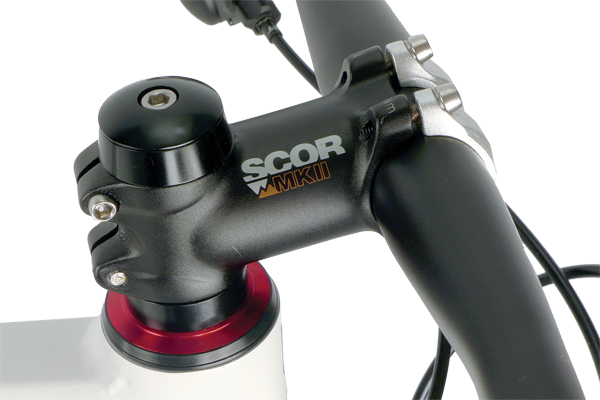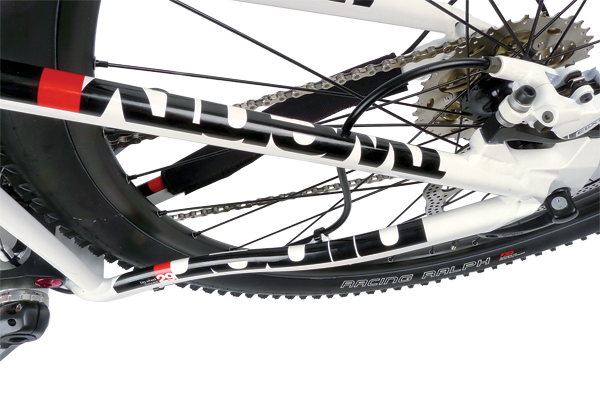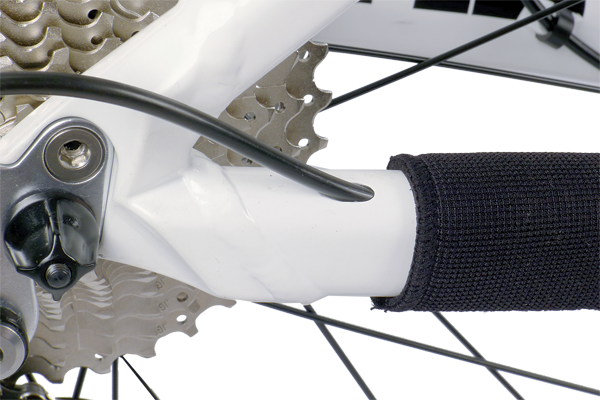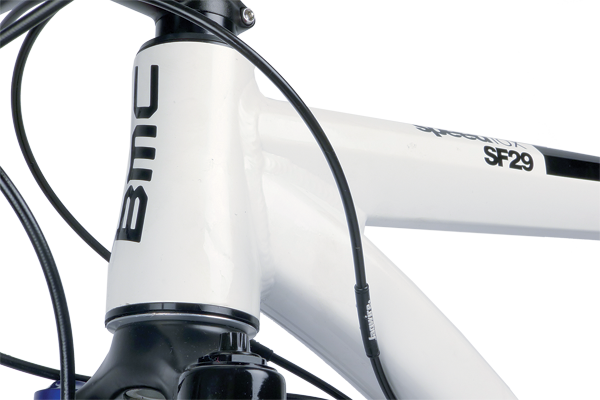BMC Speedfox 29
 Europe has lagged behind the USA and Australia in their appetite for 29 inch wheels, and until product season 2012 it has been clear that mainly non-European brands have made a commitment to 29 inch wheels.
Europe has lagged behind the USA and Australia in their appetite for 29 inch wheels, and until product season 2012 it has been clear that mainly non-European brands have made a commitment to 29 inch wheels.
This situation is rapidly changing. Big time European brands such as Cube and Focus now have deep lines of 29ers, and smaller brands such as BMC have joined the fray too. And while big wheels have gone a long way towards reviving interest in hardtails, evolving suspension design and an improved understanding of 29er geometry has also lead to more big-wheel duallies on the market.
BMC may be small in terms of their product range and volume, but this Swiss brand has some enviable cred in Australia. It seems like just last week that Cadel rolled his yellow BMC roadie down the streets of Paris (and Melbourne), and Jason English clocked up a dizzying number of marathon and 24 hour race victories on BMC bikes before a change of sponsor. Despite this, we still don’t see a too many BMC mountain bikes out on the trail, so I was very curious as to how their first attempt at a 29er dually would ride. Has BMC been wise to wait on the sidelines until now, letting other brands make mistakes with a product line that is still relatively new in the market?
Current Credentials
A quick overview of the Speedfox 29 (SF29) shows some very contemporary thinking in design and fabrication. Keeping the back end short is no easy design task with a 29 inch dually, yet the 445mm chainstays on the SF29 are as compact as those found on many hardtails. At least in theory, this should add a degree of nimbleness; a trait sometimes found lacking with the big wheel brigade.
Up front the head angle is stable but not sleepy at 70 degrees, a change from many early generation 29ers where super steep 71-73 degree head angles were used to speed up the steering and compensate for the big wheels (and often long chainstays too). BMC have also thrown in a tapered head tube and post mount rear brake tabs, just to make sure everything is modern. The only ‘new standards’ not present are thru-axles to mount the wheels and some kind of press-fit bottom bracket.
BMC (Bicycle Manufacturing Company) have been producing and refining their APS (Advanced Pivot System) for years, and it’s no surprise that it’s used here on the SF29. It’s the only suspension system that BMC uses, which shows that they are 100% committed to both this system, as well as to producing cunning acronyms. The design itself is a short link four-bar system that employs chain torque to limit unwanted pedalling bob and suspension squat when climbing or under acceleration.
The Speedfox platform is billed as BMC’s ‘marathon/race’ line, offering enough travel for all-day comfort, without carrying too much weight. With this use in mind, the SF29 offers 100mm of travel at both ends—around 20mm less than the 26 inch version but a healthy amount for a 29 inch marathon bike.
Not surprisingly the SF29 cuts a very similar profile to their 26 inch Speedfox and Fourstroke models, as it shares the same suspension design. The bottom link is a very neat forged piece, and the upper link is forged in two halves, which are welded together to form one unit. Both linkages are angular and minimal with a definite purposefulness about them; it’s very Swiss I’ll have you know. All pivots run on 10mm alloy axles with sealed cartridge bearings covered by machined anodised red alloy dust caps. The dust caps all have the pivot bolt torque settings etched into them—a sensible and practical touch. Although conditions through our test were pretty rotten (mud, rain, sand, locusts…) there was no squeaking or loosening in the multi-pivot design. It seems that the APS system has been solidly engineered and should perform reliably for many seasons.
While the suspension links are built to last, a quick finger flick on the top and down tubes reveal that these oversized pipes have been aggressively butted inside—they are pretty darn thin. A Frameskin or other protective adhesive would be a good investment for the underside of the down tube to deter dings from trail debris. The rear triangle also exhibits a disturbing amount of flex when the wheel is removed. This ‘give’ clearly occurs at the front of the triangle where chainstays are ovalised heavily to provide the tyre clearance. Obviously it relies on the rear axle to complete the triangulation and lock everything in place, but I wouldn’t be resting anything on the frame when laying the frame down in the back your car (if that’s how you happen to transport your rig). Other than these two points, BMC has created a solid set of suspension links and bolts, as the 2,903g frame weight isn’t really featherweight for a 100mm travel alloy dually.
Simple Set-up
Setting up the SF29 to hit the trail is about as easy as it gets. The RockShox Recon TK Gold fork has a really handy air pressure guide on one leg, and in my experience this guide gets you pretty close to the mark first time around. BMC has also done a top job by supplying the SF29 with a sag marker on the upper link and seat stay pivot, it’s dubbed the ‘Initial Load Indicator’ (or should that be the ILI?). Just match up the lines when you sit on the bike and you know you have the right amount of sag. Add more air for a slightly firmer ride, and take some out to go with more squish. Like the RockShox fork guide, the BMC sag marker is excellent and it got the bike 95% sorted right away. The only catch is that the marker on the seat stay is a sticker rather than a permanent graphic on the frame. By the end of the test the sticker was starting to peel a little; I’d be shocked if it outlasted six months of good, dirty riding. It really looks like an afterthought on what is otherwise a nicely finished frame.
Not everyone wants to drive a Holden or a Ford and the same applies to bikes; some people will pay a premium to ride a brand that you don’t see at every turn of the singletrack. Now BMC bikes certainly aren’t a dime-a-dozen brand but will you pay for choosing a little individuality? We reviewed the base model SF29 and it will set you back $3,450 with a functional but mid-range component selection—it’s pretty respectable value for a smaller brand that’s seen by some as vying for ‘boutique status’.
Want more bling? Well you can also shell out $5,399 for the same alloy frame fitted out with a Fox RLC thru-axle fork and SRAM X.0 running gear, but let’s look more closely at the more affordable model on review. The entire drivetrain is Shimano SLX, which is great news for anyone on a budget. SLX straight up works, with no BS or frills. I would love to see the new SLX brakes too, but BMC went with Avid Elixir 3s. They have a nice lever shape and modulation, but even with the supplied 180mm rotors, they never felt like they had enough guts to bring the big BMC to a speedy halt once it was pointed downhill and had built up steam.
All the cockpit parts are BMC’s in-house brand ‘Scor’. The bar is wide and flat, the stem short and stiff, and the saddle, well, let’s just say it protected me from the top of the seatpost and leave it at that. BMC gets full marks for their tire spec; 2.25 inch Schwalbe Rocket Ron up front and Racing Ralph out back. They roll fast, have a nice large volume bag, and offer a predictable versatile ride on a broad range of surfaces. Despite the short chainstay length the SF29 devours the 2.25 Racing Ralph with room for desert, so if you prefer a proper sized or aggressively knobbed tread then the SF29 will be happy to indulge your tastes, unlike some of its competitors.
Sizing Matters
Speaking of tastes and personal preference with bike set-up, I found the SF29 a tough one to figure out when it came to frame sizing. I fought an internal battle trying to figure out whether I needed a medium or a large frame this review. The effective top tube on the medium is a touch shorter than I’d usually ride and the large is a fraction longer. I originally decided on the medium but then noticed BMC spec all sizes with a stumpy 70mm stem. This combined with the 720mm wide handlebar indicated that BMC intend the bike to run a long top tube and short stem to get the right fit for the rider. Based on this I went with the large, and this was backed up by BMC’s rider height sizing chart which also suggested that I should be on a large frame.
BMC note their chainstay length but do not note the ‘front centre’ or wheelbase measurement for the SF29. A few rides on the large SF29 had me thinking that I had shrunk in the cold rain, or that this was one big mumma of a big bike! The front centre on the SF29 (centre of bottom bracket to centre of front wheel axle) is quite long. The SF29 is a reverse-mullet; short in the back but long in the front. The short stem and wide bar make big turns of the front wheel an easy task, even for wimpy XC arms, but they can’t bring the front wheel any closer to the riders’ centre of gravity—in the end your central position is always decided by the location of the pedals, which is decidedly rear-weighted on this bike.
Despite feeling comfy when seated and being on the right sized bike according to BMC, the SF29 felt much bigger than expected. Dynamic moves such as pre-jumping obstacles, consecutive left-right corners at speed, loading the front wheel and pushing into berms, all require more body language than anticipated. You really need to make a conscious effort to weight the front of the bike when required, and if you ride swoopy and twisty singletrack, this call arises frequently. Of course these traits could well be a perfect match for an aggressive and animated rider who really gets on top of a bike and throws it around, but it certainly didn’t float my boat…

For me the obvious solution would be to ride a medium size frame to bring the front centre length down a touch, but on a medium I’d be left with less than two centimetres of the supplied 350mm seatpost in the frame, or a 400mm seatpost run almost maxed out. I’d also need a longer stem which would in turn slow the steering compared with the stubby 70mm unit that comes with the bike.
Fire Road Slayer
On wide open fire roads and when climbing, the SF29’s lanky gait excels. The long footprint up front stops the bike from being in any way twitchy. So long as you don’t expect to have to carve a really hard turn, or need to pull up from 100 to zero in a flash, the SF29 shines. You can really barrel downhill, letting the very useable travel and big wheels flatten anything that might be in your path. The long front end also provides plenty of room to move around, so long slogs on dirt roads or double track are great as you can really get comfy in your spacious surrounds.
Other than the big feel the SF29 threw me a curve ball with its lack of rigidity. The front triangle of the frame does a sound job but both the fork and rear triangle let the team down. The leverage created by a large bike and big wheels exaggerates the flex in 29ers, and this can play a big part in how a bike rides.
My last test bike ran the same RockShox Recon TK Gold fork, also with a tapered steerer tube and 5mm quick release drop-out, and I came away impressed with the performance of this entry level fork on that bike. On the SF29 the limitations of this fork are more obvious. Set at 100mm of travel instead of 80mm, the fork has more leverage working against it, and the SF29’s supple rear suspension makes hitting high speeds on rough terrain far easier than a racy hardtail. Steering accuracy was a let down when braking into rutted corners, and the Elixir 3 front brake gobbled and groaned when trying to get a solid grip on the rotor as the elements of the fork, brake calliper and rotor were not all moving in the same plane.
The rear end flex actually helps a little on off camber rocks, roots and loose climbs, as the SF29 deflects slightly, enabling the tyre to stay in full contact with ground. The trade-off comes when pushing into high speed corners, where the back end feels sluggish and inaccurate.
The Fox RP2 rear shock uses the older Bellville shim damper instead of the newer ‘Boost Valve’ technology. It mightn’t be the top-end Fox offering but the rear of the SF29 rides very well, offering good pedalling characteristics while also utilising full travel. I’d only bother with the ProPedal setting to lessen the rear end squat that comes with overzealous use of body English in singletrack. There’s no real need for platform damping on the SF29 it pedals really well with the shock in the full-open setting.
I’ve only ever ridden in Switzerland once, so I can’t for a second think that I know what it’s all about, but based on that ride alone I can’t think of a more appropriate bike than the SF29. I’ve no idea how many vertical meters we gained that day, but I know that I spent more minutes in the granny ring in one day than I have in the three years either side of that trip. We climbed up and up for hours on old cart tracks through fields and on dirt ski roads, then burnt it all off on stupidly long descents on the same type of trails. No intestinally twisty singletrack or crazy pump-track inspired berms, just biking in real mountains. The efficient pedalling and fire road dominating SF29 would have been in heaven.
Back home we don’t have the same kind of terrain, at least not in many locations. To be an aggressive local singletrack shredder the BMC needs a thru-axle fork of some kind, and a stiffer rear triangle would also be desirable. I would also be stepping down a frame size if nimbleness is an attribute that you desire. Of course the BMC may be right up your alley if you like to sit and pedal over rough ground all day. The SF29 is a well engineered, super stable and comfortable bike that climbs like a champ and should last through many seasons.
Pros
Pedalling efficiency
Durable suspension system
Stable at high speeds
Cons
Frame and fork flex
Lacks agility
Specifications
Frame: Triple Butted Hydroformed Aluminium
Shock: Fox Float RP2 Performance (100mm travel)
Fork: RockShox Recon TK Gold, 100mm travel
Headset: Tapered integrated 1 1/8 - 1 1/2
Handlebars: Scor MKII Alloy 9-degree/720mm flat
Stem: Scor Alloy 70mm
Shifters: Shimano SLX
Front Derailleur: Shimano SLX Direct Mount
Rear Derailleur: Shimano SLX
Cassette: Shimano HG81, 11/36 10-speed
Chain: KMC X10
Cranks: Shimano SLX 24/32/42
Bottom Bracket: Shimano SLX
Pedals: N/A
Brakes: Avid Elixir 3
Rims: Alex XD-Comp
Hubs: Shimano 529
Spokes: Stainless 14g
Tyres: Schwalbe Rocket Ron / Racing Ralph 2.25
Saddle: Scor
Seatpost: Scor MKII
Weight: 13.4kg without pedals (Large frame 2,903g)
Available Sizes: S, M & L (tested)
Price: $3,450
Distributor: Echelon Sports (07) 3902 1155 / www.bmc-racing.com


 Europe has lagged behind the USA and Australia in their appetite for 29 inch wheels, and until product season 2012 it has been clear that mainly non-European brands have made a commitment to 29 inch wheels.
Europe has lagged behind the USA and Australia in their appetite for 29 inch wheels, and until product season 2012 it has been clear that mainly non-European brands have made a commitment to 29 inch wheels.









